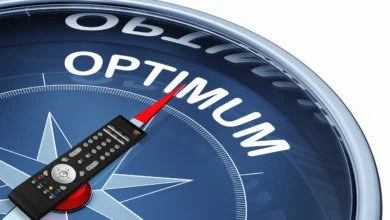How Does 5G Technology Enhance the Internet of Things (IoT)?
The Internet of Things (IoT) refers to the billions of physical devices around the world that are now connected to the internet, collecting and sharing data. IoT encompasses everything from smartphones, wearables and home appliances to smart meters, industrial sensors and connected cars. The growth of IoT is closely tied to advancements in cellular network technology, particularly the rollout of 5G.
What is 5G and How is it Better than 4G?
5G is the 5th generation of cellular mobile communications. It succeeds the 4G (LTE/WiMax), 3G (UMTS) and 2G (GSM) networks. 5G enables significantly faster data speeds, higher bandwidth and lower latency than previous generations.
Some key advantages of 5G compared to 4G:
- Higher data rates – 5G is designed to support data rates up to 20 Gbps, while 4G LTE advanced supports only up to 1 Gbps. This enables faster video/music streaming, web browsing and file downloads.
- Lower latency – The latency of 5G networks can be as low as 1 millisecond, versus about 30 – 50 ms on 4G. This enables real-time communication for time-sensitive applications.
- More capacity – 5G has greater bandwidth, meaning it can handle many more connected devices simultaneously per square km compared to 4G.
- Reliability – 5G uses network-slicing technology that guarantees high reliability and low latency for mission-critical IoT services.
- Longer battery life – 5G is designed to prolong the battery life of connected devices. IoT sensors can last 10+ years on a single charge.
How 5G Enhances IoT Capabilities
With its fast speeds, high bandwidth and low latency, 5G removes many of the constraints facing IoT applications using 3G and 4G. Here are some examples of how 5G enhances IoT capabilities:
1. Enables Massive IoT Connectivity
5G networks are designed to support up to 1 million devices per square km. Coupled with better power efficiency, 5G can handle the massive growth in IoT devices connecting to cellular networks, especially in smart cities. Sensors can be deployed across urban infrastructure for real-time monitoring and data collection.
2. Low Latency for Time-Sensitive Applications
The ultra-low latency of 5G allows real-time monitoring and critical decision-making in time-sensitive IoT applications such as:
- Autonomous Vehicles – 5G enables vehicles to make time-sensitive decisions using real-time data from onboard Sensors and other vehicles.
- Industrial Automation – 5G supports closed-loop control of manufacturing systems and robots.
- Smart Grids – 5G enables intelligent power management based on real-time data from smart meters.
3. Enhanced Mobile Broadband
With 5G, capabilities like autonomous driving, AR/VR and cloud gaming can work flawlessly on the move thanks to faster speeds, lower latency and broader coverage. These immersive and data-intensive applications push mobile broadband to the limits.
4. Network Slicing
5G allows network operators to create end-to-end virtual networks tailored for specific applications. For example, slices can be custom-built for IoT use cases that require ultra-low latency like industrial automation or autonomous driving. Other slices provide maximum reliability for critical infrastructure like power grids.
Key 5G IoT Applications
Here are some key IoT applications enhanced by 5G capabilities:
Smart cities – 5G enables real-time data collection from thousands of IoT sensors deployed across smart cities for traffic control, infrastructure monitoring, public safety and more.
Industrial IoT – 5G’s reliability and low latency support time-sensitive closed-loop control and automation in smart factories. IoT sensors also enable predictive maintenance of equipment.
Connected healthcare – 5G allows remote patient monitoring through body sensors, transmitting critical data to healthcare providers in real-time. AR/VR are enhanced for remote surgery and training.
Autonomous vehicles – 5G enables vehicles to make time-sensitive decisions for safe navigation based on real-time data from sensors and V2X (vehicle-to-everything) communication.
Enhanced drones – 5G enables advanced drone capabilities like real-time video streaming, swarm control and autonomous flight beyond the visual line of sight.
Smart homes – 5G enhances home automation through high-bandwidth IoT connectivity for appliances, lighting, security systems and entertainment.
Challenges for Widespread 5G IoT Adoption
While 5G will certainly accelerate IoT adoption, there are still challenges to be overcome:
- Infrastructure investment – Building out 5G networks requires massive capital investment from telecom operators. Rural areas may lag in coverage.
- Fragmented standards – Myriad wireless and protocol standards make interoperability complex. A unified 5G IoT standard is still evolving.
- Energy efficiency – While 5G is more efficient than older cellular networks, more progress is needed to maximize the battery life of IoT devices.
- Security – 5G security protocols like authentication and encryption must continue to evolve to protect billions of connected IoT devices from growing cyber threats.
Frequently Asked Questions
What frequencies does 5G use?
5G uses a mix of low, mid and high-frequency spectrum bands. Low bands below 1 GHz provide wide-area coverage while mid bands from 1 – 6 GHz balance coverage and capacity. High bands above 24 GHz offer massive capacity but over shorter distances.
How fast is 5G compared to 4G in real-world scenarios?
In actual deployments, users can expect typical download speeds of 100 – 400 Mbps on 5G networks and 10 – 50 Mbps on 4G LTE. However, performance varies based on location, network traffic and other factors. Latency is vastly improved on 5G.
When will 5G be widely available?
Widespread public 5G network coverage is still in the early stages in most countries. As of 2024, over 200 operators have launched 5G services in some capacity. However, the rollout is uneven, with urban and suburban areas getting services first. Rural 5G availability may lag due to infrastructure costs.
What are the health risks associated with 5G?
There is no evidence that 5G radiation causes health risks like cancer at exposure levels below current safety limits. However, more research is still needed on the long-term effects of millimetre wave frequencies used in 5G. Some nations have taken a precautionary approach by tightening regulations on 5G towers and transmission power.
How does network slicing work on 5G networks?
Network slicing allows operators to create multiple virtual networks on top of a common 5G infrastructure. Software defines each slice’s characteristics like speed, capacity and latency levels. IoT applications can have slices dedicated to their specific performance and security requirements. This enables new 5G use cases alongside enhanced mobile broadband on a shared network.





